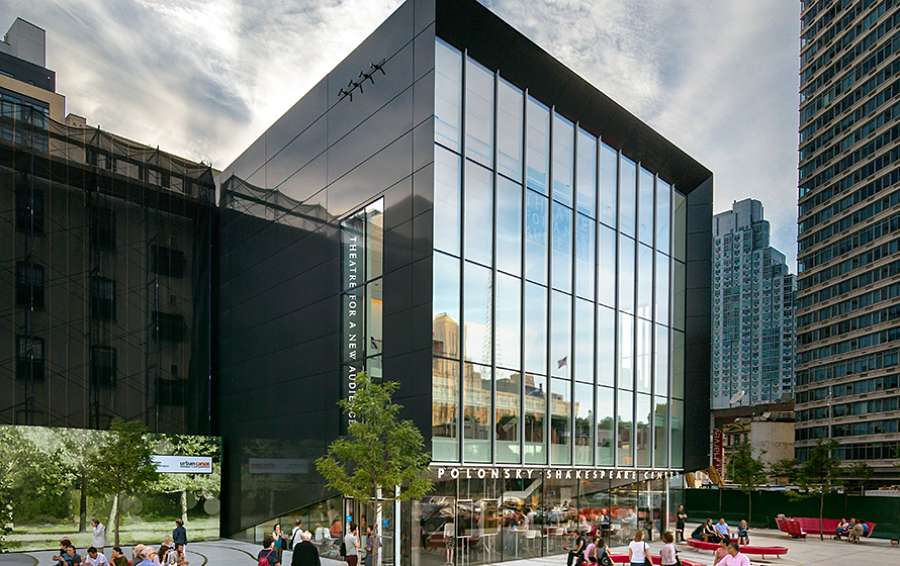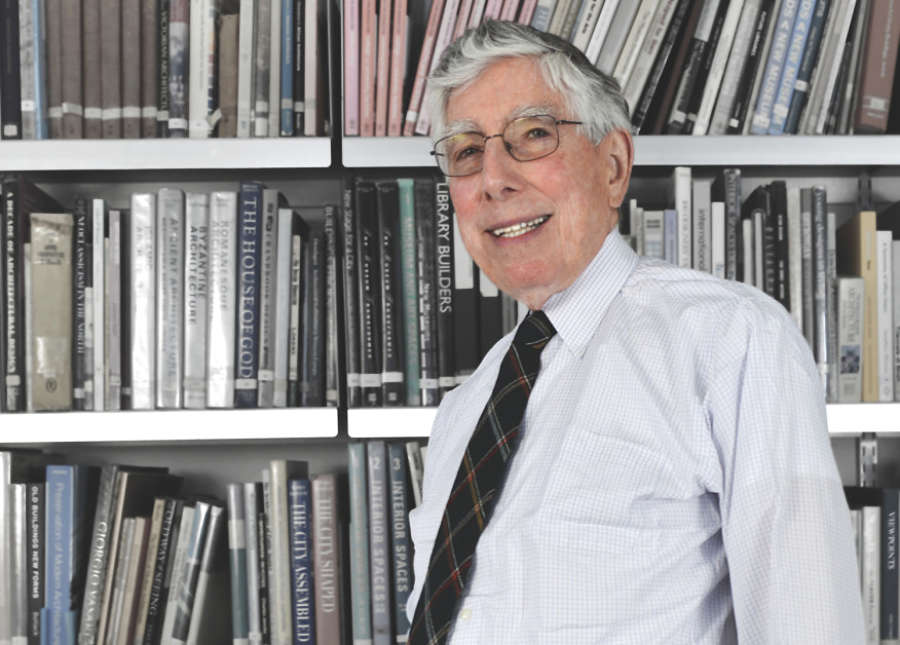Hugh Hardy was a remarkably special theatre architect. To many architects, a theatre is just another building, albeit one that might stand a good chance of making the front cover of the architectural press. To Hugh, a theatre was something very special. He truly loved theatre, and as a gregarious New Yorker that meant all the glamour and richness of Broadway. He had too a wonderfully bubbly sense of humor that accompanied his dedication.
After serving as an instructor in draftsmanship for the Army Corps of Engineers, he began working with the leading theatrical set designer of the day, Jo Mielziner, in New York. From his earliest days, as an assistant to Mielziner on the design of the Eero Saarinen’s Vivian Beaumont Theatre at Lincoln Center, theatre was part of his life. Back in 1959-60 Hugh was assistant scene designer to four productions for Mielziner, even upon one occasion sharing the credit with Ming Cho Lee. In 1959 Hugh was even credited with being the lighting designer on two shows at the Sheridan Playhouse! He joined Local 829 of the United Scenic Artists in 1958.
Hugh was one of the first American architects to pioneer “three-dimensional” theatre, bringing back multiple-level balconies with side boxes for projects in Eugene, Ore., Anchorage, Alaska, and the Alice Busch Opera Theater, for the Glimmerglass Festival in Cooperstown, N.Y. Other notable theatres included the ever-popular dance venue the Joyce Theatre, and more recently the Claire Tow Theater over Lincoln Center Theater. I personally was always somewhat puzzled by his enthusiasm for large-scale decoration, which to me diminished rather than enlarged the performer. But his theatre restorations were models of perfect theatrical taste: the Victory Theatre on 42nd Street, Radio City Music Hall, the Brooklyn Academy of Music, and, most wondrous of all, the New Amsterdam Theatre for the Disney Theatrical Group. I was honored to work with Hugh as his theatre consultant on this restoration of what is surely one of the most beauteous theatres in the world.
A fascinating restoration with which Hugh was involved was the restoration of BAM’s Harvey Theatre for pioneering British director Peter Brook. This classic space, built in 1904, had been a legit theatre, then a movie house, then was abandoned in 1968. Under the supervision of Chloe Obolensky, designer of The Mahabharata, it was brought to new life.
‘The challenge was to create the appearance of an old theatre in a state of decay,” said a spokesman for Hardy Holzman Pfeiffer Associates, the architect. ”Our contractors laughed.” The job, he added, ”required constant surveillance to make sure the contractors didn’t make things look too nice.”
The Harvey became a uniquely important theatre in the New York scene. Like Brook’s Paris headquarters, the Bouffe Du Nord, it demonstrated a vital ingredient for any theatre: a link, a sense of memory, with the historic past. Some theatregoers seemed perplexed by the restoration. One said: ”I didn’t know quite what to think. It’s somewhat like visiting a Roman ruin.” Hugh anticipated this, predicting, “Some will be quite startled; it’s not like a bourgeois room. It is a restoration in the sense of bringing life to a building.”

We at Theatre Projects collaborated with Hugh on the quest for a new home for New York City Opera when the company determined that it needed to move from the New York State Theatre. This included the creation of a concept design for a new mid-sized opera house on several sites around the city. I think Hugh and I somewhat differed in our views on the nature of the opera house: For such a vital addition to the New York opera scene, I was committed to a more strictly classic horseshoe-shaped design for reasons of acoustic and theatrical intimacy, while Hugh preferred the model he has developed for the multi-purpose halls in Eugene and Anchorage. Sadly for us both—and for opera in New York—the project failed to come to realization.
The last project on which we cooperated together was the Theatre for New Audience’s Polonsky Shakespeare Center, the Samuel H. Scripps Mainstage, in Brooklyn. This, at the specific request of founder Jeffrey Horowitz, was to be based upon Theatre Projects’ successful design for the Cottesloe Theatre in London’s National Theatre. While the pure geometry of this model was at times somewhat frustrating to Hugh’s ambitious theatrical instincts, he and his team created around our design an inspiring and at the same time totally practical building of considerable distinction.
Hugh was a wise, witty, and always enjoyable friend. He was a real New Yorker, responsible for many other landmark buildings in his beloved city. Hugh was finally a gentleman in the truest and most civilized sense of that word. He will be sorely missed and his legacy long remembered.
Richard Pilbrow is the founder of Theatre Projects and the author, with David Barbour, of A Theatre Project. To view some of Hardy’s most beloved buildings, go here.


